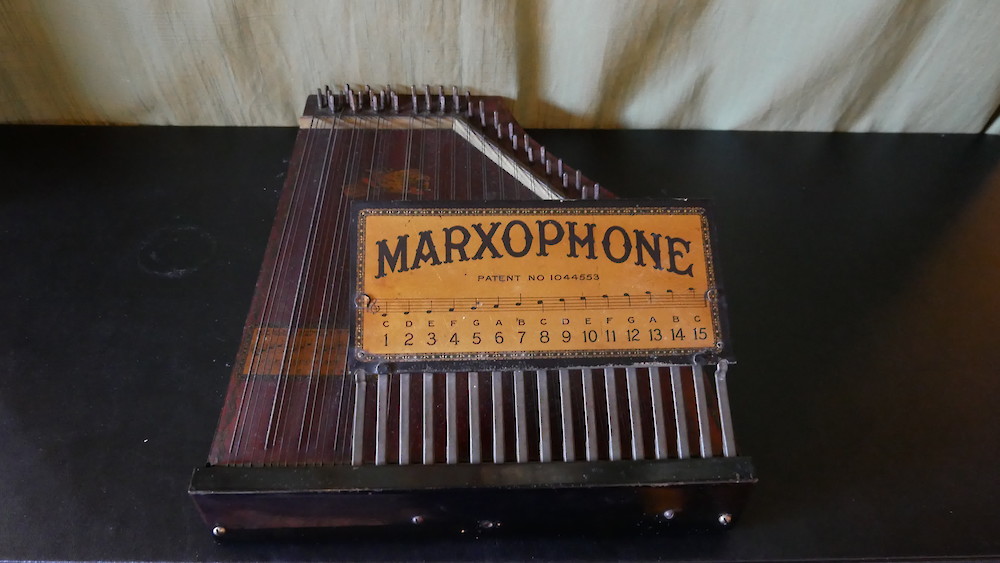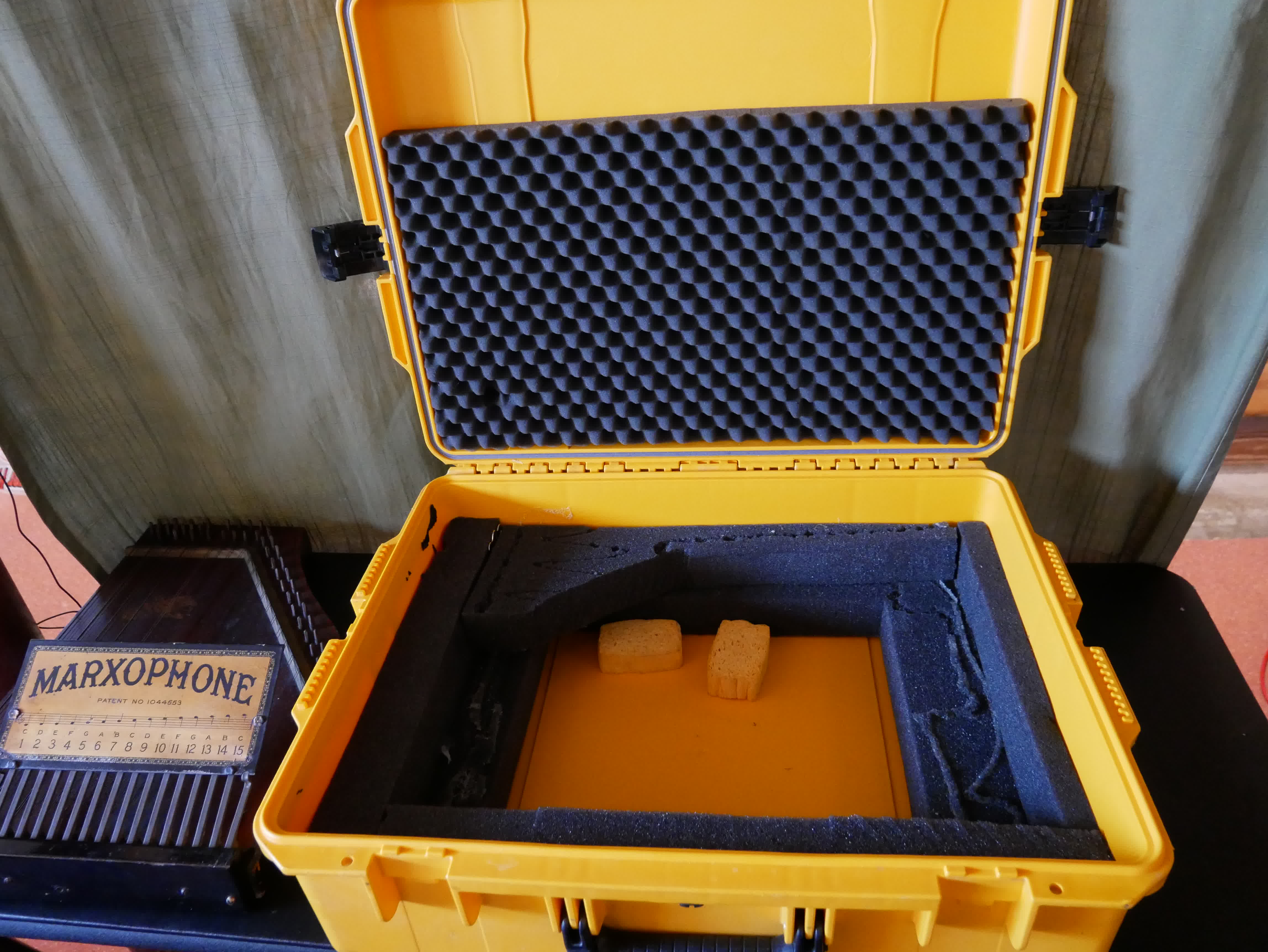
The Marxophone
I’ve owned a couple of Marxophones for a long time, but they were not fully functional, missing some hammers, or strings, or badly cracked. I had to resort to using sample libraries, and there are some good ones. Notably the Bolder Sounds Marxophone is good, as well as SonicCouture Box of Tricks.
But you need a real one if you want to do cool things like put it through pedals, amps, or do custom tunings, and really play it.
I finally found one on eBay that was in decent condition, where all of the hammers are in tact, and a minimum of cracks or separation of the back from the body (pictured above).
Even old Marxophones that might seem stable can still be sensitive to humidity, so you have to keep the temperature and humidity stable for the instrument when you own one. Since that is difficult to do where I am, I purchased an air-sealed hard case for this and adapted the foam to fit it. There are very few cases that will fit a Marxophone, but one that does is the Hardigg Storm Case, iM2700.

You can typically find used ones on eBay for $65-115. This case is a bit taller than it would need to be for the instrument, but there are no other cases that I could find that would fit. Having the case be oversized in terms of thickness also allows you to store the instrument with the hammers up. You can store the instrument in one of these cases, and put a couple of moist sponges in the case, and this will keep it in good shape for a cold and dry winter.
Music for the Marxophone seems to me to be extremely rare – I haven’t seen any available on the internet for download (so nobody has gone to the trouble of scanning or photographing this music), and this instrument came with a collection of sheet music for it. (If you know of any resource that has Marxophone sheet music, please contact me here). Attached to this post is a PDF of the chart for “I Used To Be Afriad To Go Home In The Dark”.
Marxophone “tablature” (known as charts at the time) are specifically sized sheets of paper that fit onto the instrument, and provide a visual roadmap for how to play the melody and which chords to play, and when. They don’t look anything like music, as you can see, and there are instructions for how to place the music under the clips, and what the symbols mean. This special notation would enable anyone to perform a melody without having to learn to read music notation.



